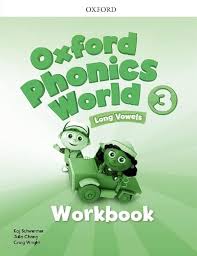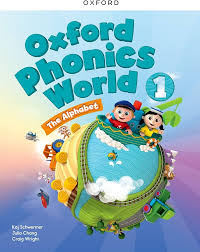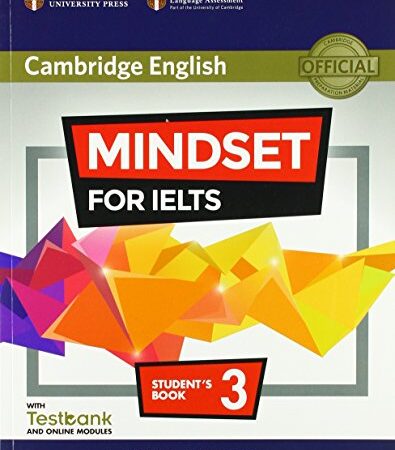Key Features of Oxford Phonics World 3:
Advanced Sound Combinations: Level 3 introduces more complex sound patterns and phonics rules, including:
Consonant blends (e.g., “cl”, “dr”, “st”, “pl”)
Vowel digraphs and diphthongs (e.g., “oo”, “ai”, “au”, “ou”, “oi”, “ar”)
Silent letters (e.g., “kn”, “wr”)
More advanced vowel sounds (e.g., “ir”, “ur”, “ear”, “air”)
Word Families & Spelling Patterns: In Level 3, students explore a broader range of word families, which helps reinforce the idea that certain letter combinations produce similar sounds. For example:
“-ay” (e.g., “play”, “day”, “say”)
“-ee” (e.g., “see”, “tree”, “bee”)
Blending & Segmenting: Building on the blending skills from earlier levels, Level 3 encourages students to blend more complex sounds into words and segment longer words into smaller phonetic parts. This helps develop both reading and spelling skills.
Sentence Reading: Learners start to read simple sentences and short paragraphs, which reinforces how phonics applies to actual text. They also start to develop reading fluency as they practice reading sentences with more challenging words.
Sight Words: In this level, there is a stronger focus on high-frequency sight words that do not follow regular phonetic patterns. This helps students recognize these words quickly, which improves their reading fluency.
Story & Contextual Learning: The course includes short stories and dialogues, allowing students to see the phonics concepts in context. The stories are simple but engaging, often featuring colorful illustrations that help young learners connect meaning with sounds.
Activities & Games: As with the previous levels, Oxford Phonics World 3 continues to include a variety of interactive activities and games to reinforce phonics skills. These might include:
Matching sounds to pictures
Completing missing words in sentences
Phonics puzzles
Spelling games
Progressive Learning: The level is designed to gradually increase in difficulty, so learners are never overwhelmed but are always challenged to progress. By the end of Level 3, students should be able to read more independently, recognize more words, and understand the rules for spelling and pronunciation in greater depth.
Oxford Phonics World 3 iTool for Windows
- Structure of Level 3:
Unit 1: Introduces more consonant blends (e.g., “st”, “dr”, “tr”) and short vowel sounds in multisyllabic words.
Unit 2: Focuses on complex vowel sounds (e.g., “ou”, “oi”) and introduces words with silent letters (e.g., “knight”, “wrap”).
Unit 3: Builds on diphthongs like “oi”, “ow”, and “ou”, with more practice in blending and segmenting.
Unit 4: Focuses on long vowel sounds (e.g., “ea”, “ai”, “ee”) and introduces compound words (e.g., “sunflower”, “playground”).
Unit 5: Reviews and practices using these skills in more complex sentences and stories.
Unit 6: Consolidates everything learned in the previous units, with comprehension activities and review exercises.
$5.00
Buy Now









Reviews
There are no reviews yet.